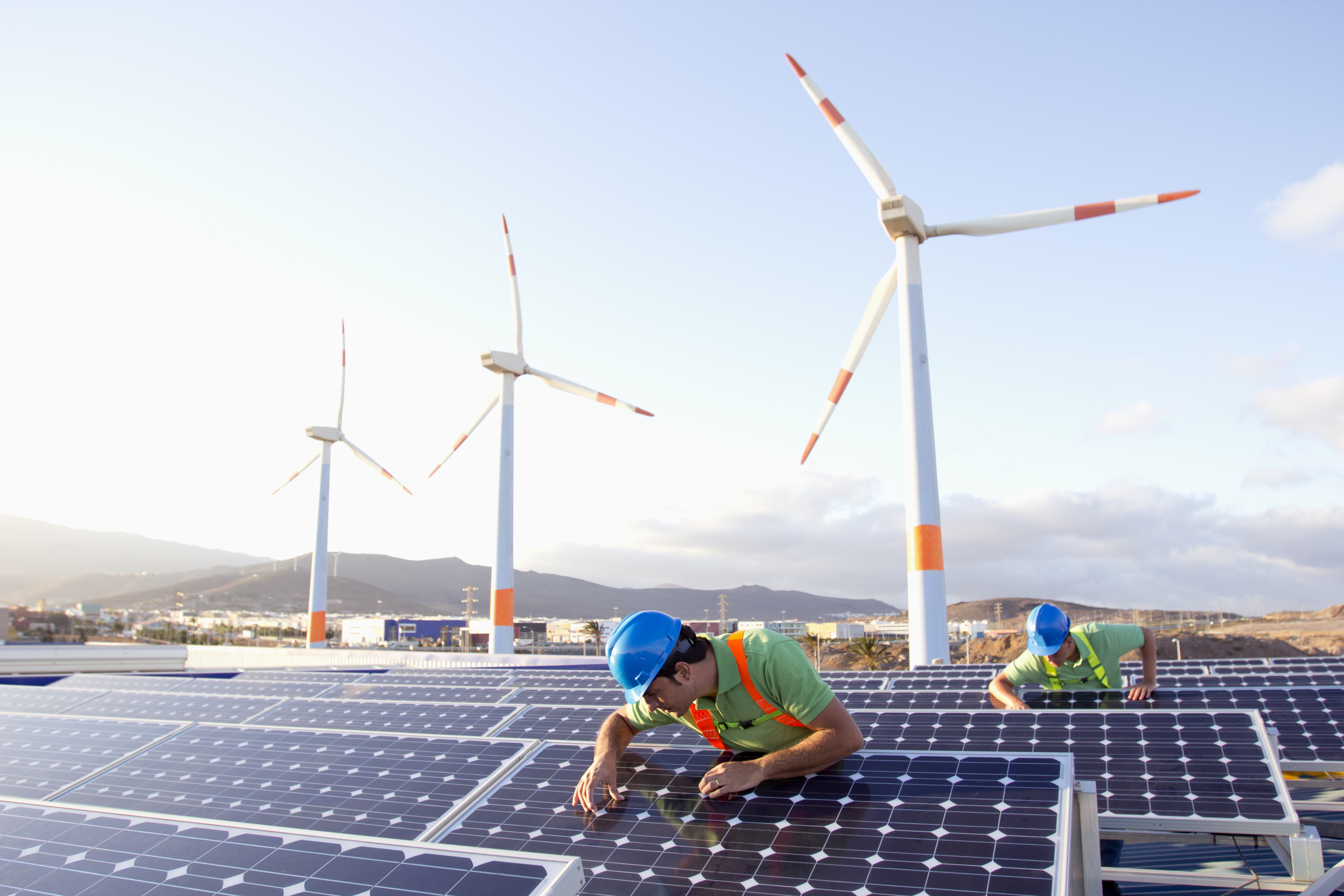Renewables are set to soar
The world will likely witness a wind and solar boom over the next five years, as costs decline and nations raise their climate ambitions.

Construction of solar farms, wind turbines, and other sources of renewable power will soar over the next five years as nations set stricter climate policies and more ambitious emissions targets.
New renewable electricity capacity will set another record this year, at 290 gigawatts, according to a new report from the International Energy Agency. That’s roughly equivalent to building nearly 300 nuclear reactors or almost 150 Hoover Dams, and it’s happening despite global supply chain issues, rising material costs, and covid restrictions.
By 2026, global capacity from these carbon-free sources will rise more than 60% over last year’s levels, the intergovernmental research organization now projects. That will add up to some 4,800 gigawatts, on par with all the world’s fossil-fuel and nuclear plants today.
In addition, renewables will account for 95% of the overall capacity growth in the power sector over that period.
Building new wind and solar plants doesn’t necessarily mean renewables are displacing fossil fuel—because demand for energy is rising as well. And it still remains to be seen how quickly carbon-free sources will become the dominant source of electricity globally and begin rapidly supplanting coal, natural gas, and other polluting sources.
While renewables now account for most of the new capacity being built, the level of electricity generation by source can bounce around considerably from year to year, depending on shifting costs, weather conditions, and more. But in the last few years, generation from coal has declined and solar, hydro, and wind have ticked up, according to BloombergNEF. In fact, those three sources accounted for all the growth in power generation last year, as electricity output from coal, natural gas, and nuclear plants declined.
The IEA’s renewables estimates for 2026 are a substantial upward revision, more than 40% higher than its projections last year. Among other things, the agency cited the improving economics, increased national emissions reduction commitments ahead of the recent UN climate conference, and domestic developments and policies.
Those included China’s commitment to achieving net-zero carbon emissions targets by 2060; the US’s extension of federal tax credits as part of the Build Back Better bill, which the House has passed; and both national and corporate efforts to comply with policies and emissions targets within the European Union.
China, Europe, the US, and India will account for nearly 80% of the added renewable capacity.
Despite the boon in renewable capacity, however, the world is still far behind on the goal of building out a net-zero energy sector, which will ultimately be necessary to halt global warming. For nations to get on track for that scenario by 2050, average annual additions of renewables will need to double over the level the IEA expects to see over the next five years.
Among other things, that’s likely to require far more aggressive climate policies and goals; still cheaper wind, solar, and other carbon-free sources; and the rapid development of additional technologies needed to balance out rising shares of fluctuating renewables on the grid.
Deep Dive
Climate change and energy
The problem with plug-in hybrids? Their drivers.
Plug-in hybrids are often sold as a transition to EVs, but new data from Europe shows we’re still underestimating the emissions they produce.
Harvard has halted its long-planned atmospheric geoengineering experiment
The decision follows years of controversy and the departure of one of the program’s key researchers.
Why hydrogen is losing the race to power cleaner cars
Batteries are dominating zero-emissions vehicles, and the fuel has better uses elsewhere.
Decarbonizing production of energy is a quick win
Clean technologies, including carbon management platforms, enable the global energy industry to play a crucial role in the transition to net zero.
Stay connected
Get the latest updates from
MIT Technology Review
Discover special offers, top stories, upcoming events, and more.